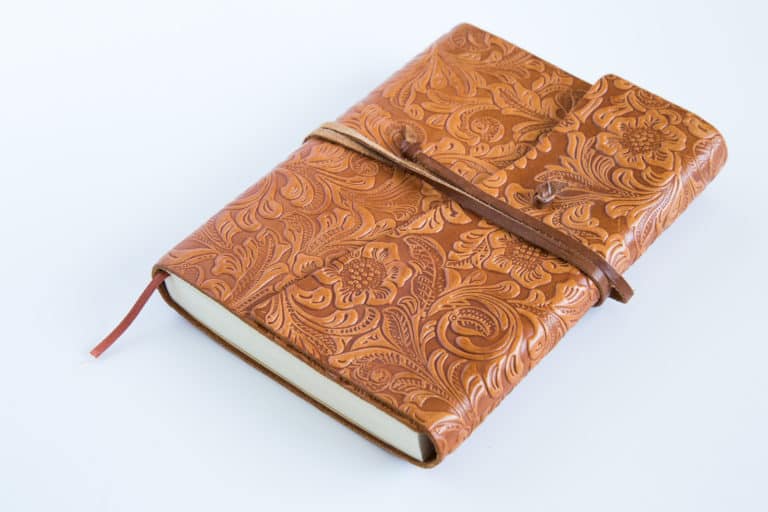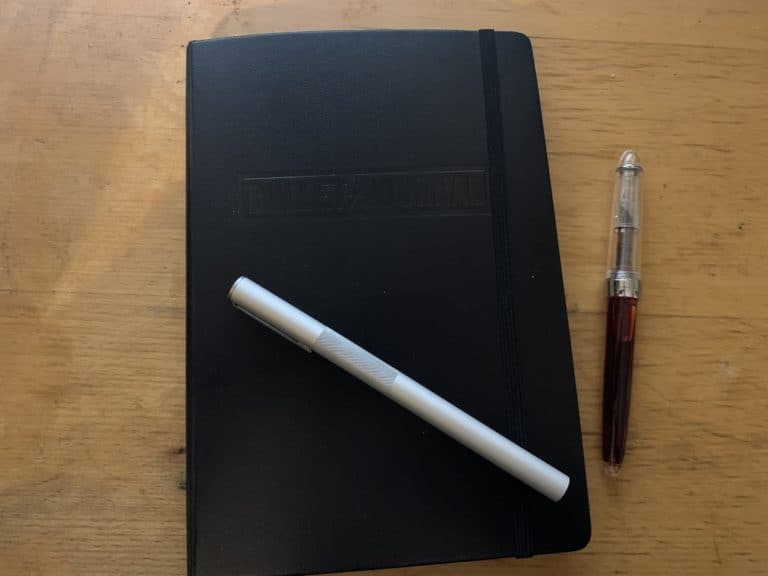The Power of a Short Story as a Diary Entry
We’ll explore the potential possibilities that come with writing a short story as a diary entry. We’ll discuss how authors can use language, structure, and tone to create something truly captivating. We’ll also examine examples from published writers who have successfully blended these two forms.
A short story can be written in the form of a diary entry. This technique is called “diary fiction” or “epistolary fiction,” It involves telling a story through a series of diary entries or letters.
Some famous literary works, such as “The Color Purple” by Alice Walker and “The Perks of Being a Wallflower” by Stephen Chbosky, are written in this format. Writing a short story as a diary entry can effectively create a more personal and intimate connection between the reader and the protagonist, as the reader experiences the story through the character’s thoughts and feelings.
By delving into the depths of creative writing, let’s discover whether literature has space for combining short stories and diary entries – and discover just how powerful they can be!
- Definition Of A Short Story
- What Is A Diary Entry?
- Relationship Between The Two
- Benefits Of Combining The Two Forms
- Examples Of Successful Short Story/Diary Entry Hybrids
- Frequently Asked Questions
- Is It Possible To Write A Short Story As A Diary Entry?
- How Long Should A Short Story/Diary Entry Hybrid Be?
- What Are The Best Practices For Writing A Short Story/Diary Entry Hybrid?
- Are Any Particular Genres That Work Better For Short Story/Diary Entry Hybrids?
- Is There A Difference Between A Short Story And A Diary Entry In Terms Of The Writing Style?
- Conclusion
Definition Of A Short Story
A short story is a literary work of fiction, typically with a narrative structure and written in prose. It often follows the traditional framework of having characters, plot, setting, and conflict – all within a shorter word count than that of other forms of literature such as novels or novellas. Short stories are an ideal way for writers to explore complex themes while being concise and engaging.
The definition of a short story can vary depending on who you ask; some may say it’s any piece of writing under 10,000 words, and others might put this number higher or lower. Ultimately, short stories rely on the writer’s technique to create a vivid atmosphere and captivate the audience through minimalistic language. This makes them quite different from longer works like novels which have more room for character development over time.
So when considering whether a diary entry could be classified as a short story, certain elements must be present. While diary entries recount events from one person’s life, they would not necessarily include the same detail about characters, settings, and conflicts as classic examples of literary fiction such as Ernest Hemingway’s ‘Hills Like White Elephants.’

What Is A Diary Entry?
A diary entry is a personal form of writing that captures one’s thoughts, feelings, and experiences. It can be used for reflection or self-expression and usually involves narrating events from the writer’s perspective. A diary entry, also known as a journal entry, may include short stories and longer pieces.
Diary entries are often informal and generally contain information about what has happened during the day and reflections on those events. This type of writing allows one to record memories, emotions, and opinions without judgment or censorship. The structure of a diary entry depends heavily on the individual author; some prefer to write chronologically, while others might focus on specific topics or themes each time they sit down to write.
Unlike narrative writing, diary entries focus more on personal feelings than developing characters or plotlines, as novels do. They provide valuable insight into how we process our lives – allowing us to express ourselves creatively in ways that traditional forms of communication don’t always allow. Diary entries can help us make sense of difficult circumstances by offering a safe space to reflect inwardly.
This intimate form of writing encourages introspection and enables people to understand their perspectives, beliefs, and values over time. In this way, it plays an important role in helping individuals grow emotionally and spiritually through deep contemplation and exploration.
Relationship Between The Two
Yes, a short story can be a diary entry. Both forms of expression require the author to craft an engaging tale that connects with the reader. By combining these two forms, authors can create successful hybrids that bring together aspects of both types of writing.
Short stories typically focus on creating a narrative arc and developing characters within that arc over time. On the other hand, diary entries often focus more on concretely expressing personal feelings and thoughts without necessarily worrying about telling a complete story or developing characters.
When combining these two forms, authors must consider balancing elements from each form while still creating something unique and engaging for readers. Through this combination, writers can explore new possibilities like establishing a believable inner dialogue between fictionalized versions of themselves or weaving intimate details into their plotlines as part of character development.
Successful hybrids demonstrate how powerful it can be when authors combine different writing styles – such as those found in short stories and diary entries – to create meaningful works that capture our attention and imagination.

Benefits Of Combining The Two Forms
Yes, a short story can be a diary entry. Combining these two forms of writing offers unique benefits to writers and readers alike. By combining elements from both the short story and diary entry genres, writers have access to unprecedented creativity in their writing style.
The traditional structure of a short story – with its beginning, middle, and end – provides a structure for creative ideas that may otherwise remain unshaped. It encourages authors to think about the order in which events occur and how those events impact characters or plotlines. On the other hand, the more informal nature of a diary entry gives authors greater freedom to express personal feelings and opinions without worrying about narrative flow or dialogue conventions. This opens up new avenues for exploration regarding developing character arcs or adding layers to stories.
In addition, by using both forms together, readers can experience different points of view within the same world as they read through related entries or chapters in succession. They get insight into how people interact with each other; how events change them; how history shapes our present; and so much more! As such, this dual form enables authors to create emotionally engaging works that captivate audiences’ interest while deepening their understanding of human relationships.
Combining the best features of two distinct literary styles will reignite your creativity and spark interesting conversations among readers who enjoy your work. Whether you’re looking for ways to expand on existing projects or jumpstart something entirely new, incorporating aspects from a short story and diary entry formats could provide just what you need!
Examples Of Successful Short Story/Diary Entry Hybrids
In recent years, the concept of a short story/diary entry hybrid has become increasingly popular. This type of writing combines aspects of both storytelling and diary entries to create an engaging narrative that is uniquely personal yet universal in its appeal. Examples of successful stories-in-the-style-of-a-diary come from authors like Jodi Picoult, who wrote My Sister’s Keeper as a series of diary entries by her main character Anna. Similarly, Stephen Chbosky’s The Perks Of Being A Wallflower is written in epistolary form, giving readers an intimate look into the protagonist’s thoughts and feelings throughout his adolescence.
Even nonfiction books have started exploring this fusion between story and diary entry, such as Cheryl Strayed’s Wild, which follows her life after her mother’s death through flashbacks and present-day journaling. While not all short stories or diaries need to be hybrids, these examples demonstrate how powerfully merging these two forms can create captivating narratives accessible to any reader. By combining elements from each form – plot structure from short stories with emotionality from diaries – writers can craft experiences full of depth that can resonate deeply with their audience.
Frequently Asked Questions
Is It Possible To Write A Short Story As A Diary Entry?
Writing a short story as a diary entry may sound impossible, but it is pretty doable. By combining the elements of a diary with those of a traditional short story, you can create an exciting and unique piece that will capture your reader’s attention.
The first step to writing a successful short story in the form of a diary entry is to decide how much information you want to include in each section. You’ll need to consider what kind of tone you’re trying to convey – whether it’s reflective or more narrative-driven – and determine which details are necessary for your plot. Once you’ve established this structure, it becomes easier to write primary sections such as setting, characters, conflict resolution, and climax within the framework of your diary entries.
The second key factor when creating a diary entry-style short story is knowing where and how often to add dialogue between characters. This helps give life and depth to the characters while also giving readers insight into their relationships with one another. Additionally, using vivid imagery throughout gives readers an insight into the protagonist’s thoughts and feelings without explicitly stating them outright. Lastly, don’t forget to add sensory descriptions so readers can immerse themselves in your world.
With these three tips in mind – deciding on a structure, incorporating dialogue, and adding description – anyone can craft an engaging short story through a series of diary entries. So go ahead – get creative! There is no better way than writing a unique piece to capture both knowledges gained from personal experience and storytelling techniques found in literature classes around the globe.
How Long Should A Short Story/Diary Entry Hybrid Be?
When writing a short story/diary entry hybrid, it’s essential to consider the length of each form. A short story typically runs between 500 and 5000 words, while a diary entry is usually much shorter – perhaps only a few sentences or paragraphs long. So how long should your story-diary hybrid be?
The answer depends on what kind of experience you want readers to have. Longer works are ideal for an immersive narrative that intimately connects with your audience. But if you’re looking for something more experimental – say, exploring the concept of time through a combination of fictional elements, and real-life reflection – shorter pieces might serve as better tools to convey this complex idea. Ultimately, there’s no right or wrong length when creating a successful short story/diary entry hybrid: it all boils down to understanding what sort of impact you want your work to make.
In terms of genre conventions, many authors find success by combining elements from both forms in their stories. For instance, they may introduce characters and settings in their diaries before expanding upon them later in their fiction pieces; likewise, they could use diary entries as reflective interludes between chapters or scenes. Furthermore, some writers even choose to feature diary entries within dialogue – allowing characters to verbalize inner thoughts about life events directly on the page. This can help create an intimate bond between reader and author which is hard to achieve through other literary techniques alone.
No matter what approach authors take when crafting their unique short story/diary hybrids, one thing remains certain: such works offer us new ways of expressing ourselves creatively and connecting with our audiences emotionally. By embracing both genres simultaneously, we open up fascinating possibilities for self-exploration and artistic expression – showcasing our multifaceted identities as individuals who live lives full of contradiction and complexity.
What Are The Best Practices For Writing A Short Story/Diary Entry Hybrid?
When writing a short story/diary entry hybrid, certain best practices should be followed for the piece’s success. Writing this type of hybrid involves creating a unique writing style and leveraging the strengths of both genres—the reflective nature of diary entries and the creative elements of short stories.
For starters, when crafting your hybrid piece, focus on how each genre can contribute to telling a complete story. When penning in diary-style sections, use language that captures how you feel or thinks about an event. This will help bring authenticity and emotion into your work which is vital for connecting with readers. Consider adding vivid descriptions and dialogue between characters for short story sections, as these narrative devices can add depth and intrigue to your story.
In terms of structure, aim to create an even balance between diary entries and short stories within your piece – usually alternating entries, so the reader doesn’t get bored by too much repetition or overwhelmed by too many details at once. Lastly, try to keep things concise without sacrificing detail – long pieces often lose their impact due to overindulgence in one genre or another. By following these tips when constructing your hybrid, you’ll be able to craft an engaging piece that resonates with readers through its effective merging of styles.
Are Any Particular Genres That Work Better For Short Story/Diary Entry Hybrids?
Writing a short story/diary entry hybrid can be an exciting and unique form of literature. While no rules dictate which genre works best, specific genres may lend themselves more to the format than others. Historical fiction, fantasy fiction, science fiction, romantic fiction, and horror fiction are potential options for creating this hybrid piece.
Historical fiction is ideal because it allows authors to discuss real events or people creatively and even mix elements from other genres into their stories with relative ease. Fantasy fiction also provides ample opportunity for exploration due to its limitless boundaries regarding imaginary worlds and creatures. Science fiction allows writers to explore futuristic technology without restrictions – these stories often come with exciting plot twists and many action-packed scenes.
Romantic fiction is another excellent choice for writing a diary/short story hybrid since it typically follows a linear timeline. This makes it easier for readers to follow along while still having the feel of both a short story and personal diary entries mixed. Horror stories have been popular choices over time; they allow authors to create suspenseful storylines full of mystery and dread that bring out strong emotions in readers.
No matter what genre you choose for your project, ensure you incorporate elements of the diary entry and short story formats. Hence, your audience feels like they’re getting two pieces of literature rolled into one package. Crafting an engaging tale takes creativity and dedication – but readers will appreciate the effort put forth if done right!
Is There A Difference Between A Short Story And A Diary Entry In Terms Of The Writing Style?
Regarding writing style, there is a difference between a short story and a diary entry. Short stories typically have an engaging narrative structure that allows the reader to be immersed in the world of the characters while developing their understanding of the plot. In contrast, diary entries are often more informal and personal, providing readers with insight into the thoughts and feelings of the writer. While these two types of writing styles can exist independently, they can also work together in what’s known as a ‘story-diary hybrid’ – a type of writing that combines elements from both genres for maximum effect.
The way these works is by creating an alternate universe within which readers get to experience both perspectives simultaneously. By combining engaging narratives with intimate details about how events play out in the minds and hearts of its protagonists, hybrids provide readers with a unique reading experience that cannot be found anywhere else. This allows writers to explore themes such as identity, relationships, emotions, and truth in ways that traditional literature cannot match.
Exploring story-diary hybrids could benefit those looking to write something genuinely innovative. By blending elements from different genres, you can create something entirely new and exciting that offers far more than just entertainment value but also provokes thought on deeper topics. It may take some time to perfect your craft, but you will undoubtedly produce truly captivating pieces if done correctly!
Conclusion
It is possible to write a short story as a diary entry, though there are some considerations to consider.
Firstly, the length of the hybrid should be kept relatively brief; it doesn’t need to be overly long for it to work.
Secondly, good writing practices should still apply when creating this type of narrative, and writers should keep their readers engaged by developing interesting characters and compelling storylines.
Finally, specific genres may lend themselves more effectively than others to this kind of storytelling – horror stories often benefit from being told as diary entries due to their intensely personal nature. Ultimately, while there is a difference between a short story and a diary entry regarding the writing style used, these two formats can be combined successfully with careful consideration given to length and structure.






